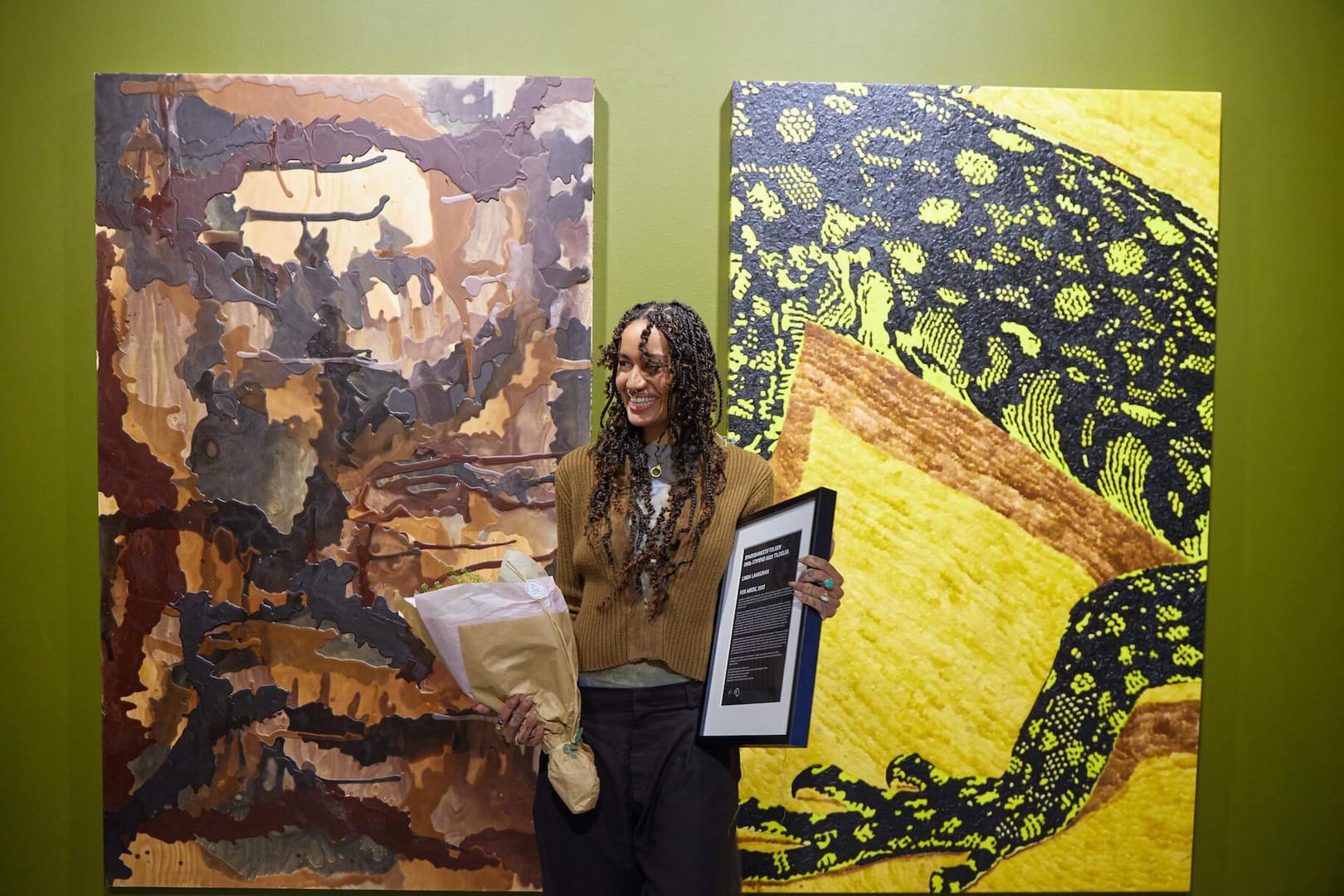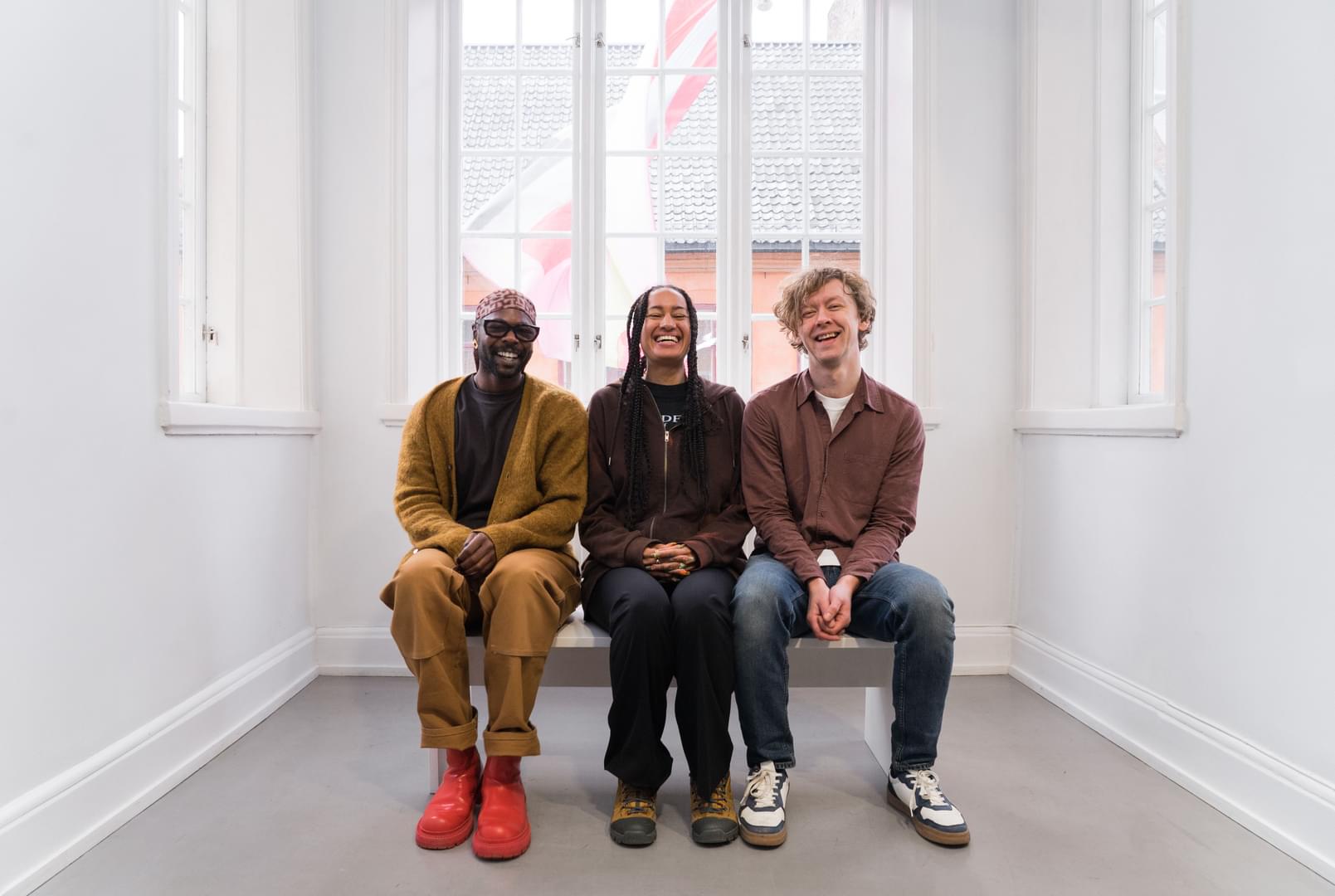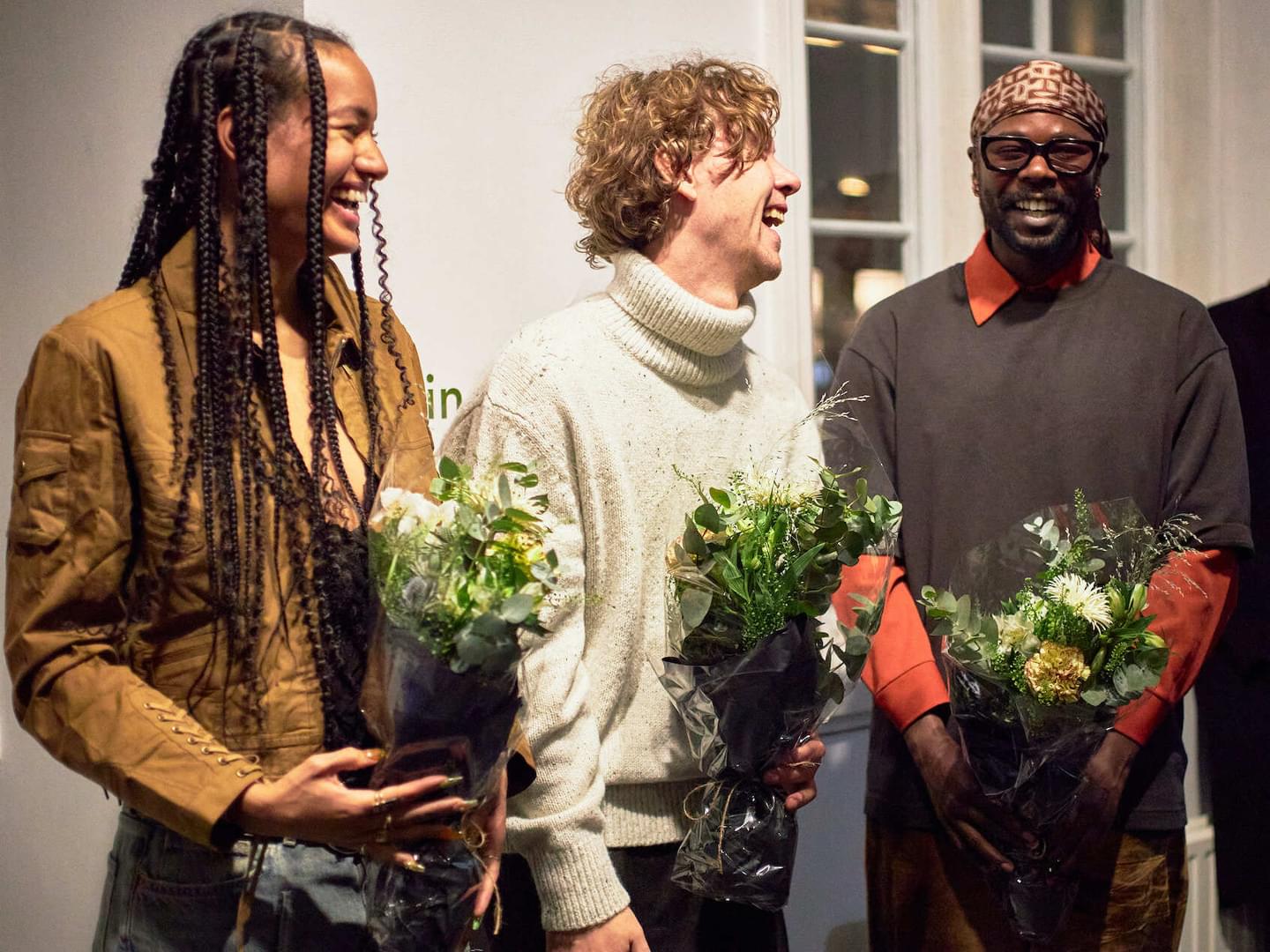Sparebankstiftelsen DNBs stipendutstilling 2023
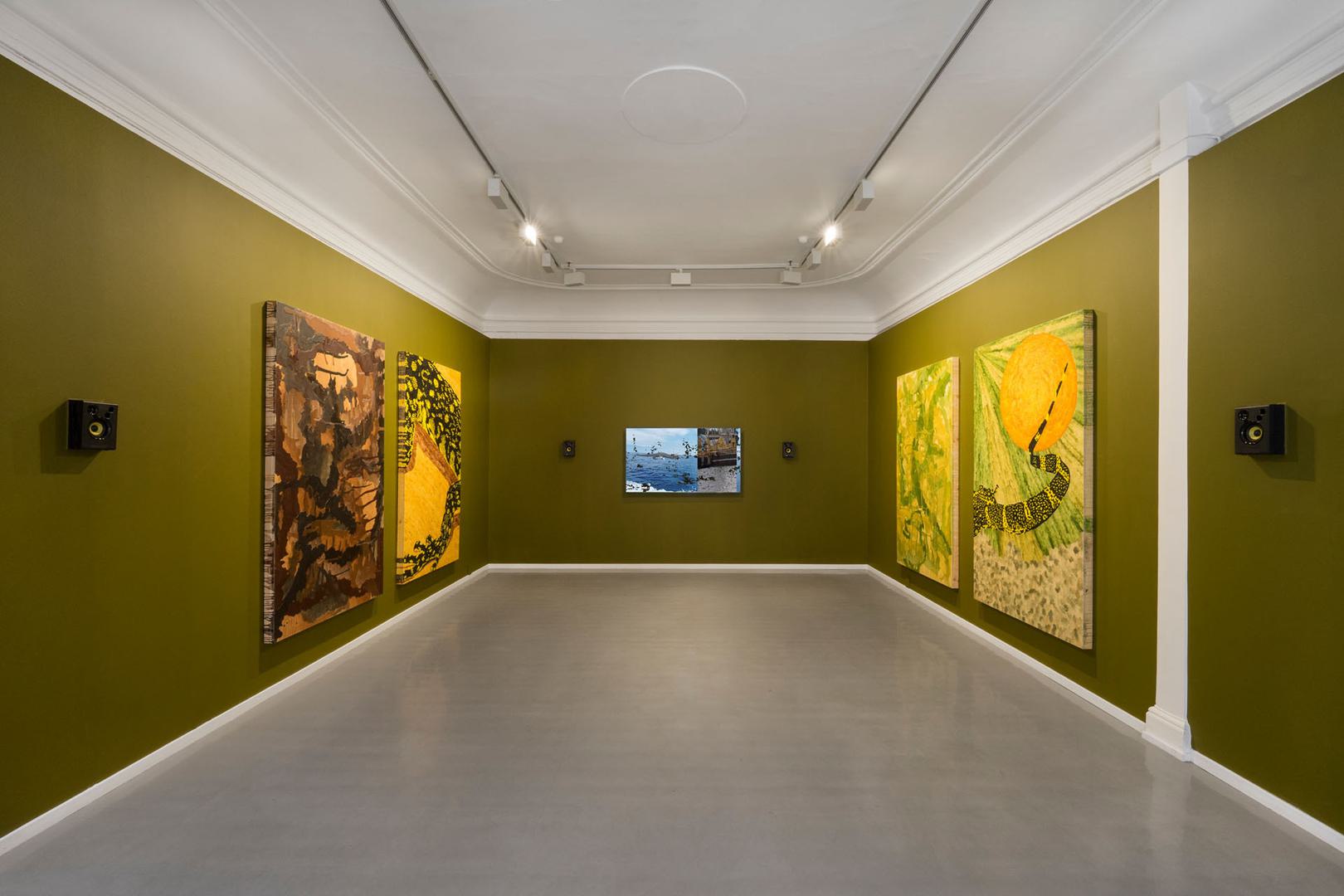
Linda Lamignan, ABEDE, 2023. Photo: Jacky Jaan Yuan Kuo
This year's exhibitors in Sparebankstiftelsen DNB's Grant Exhibition are Damien Ajavon, Kåre Aleksander Grundvåg and Linda Lamignan.
Oslo Kunstforening congratulates Linda Lamignan as the grant recipient of the Sparebankstiftelsen DNB’s grant 2023! Lamignan is awarded the grant of 200 000 NOK for the work ABEDE.
"The jury commends Lamignan for the complexity of the work and the many narratives that are not immediately apparent in the individual pieces, but together create a striking and consistent whole."
– Elise Storsveen, Pedro Gómez-Egaña, Sandra Mujinga, Axel Wieder and Elisabeth Byre
The grant exhibition is held at Oslo Kunstforening for the sixteenth time, and is an event that has become an important institution in Norway’s art scene over the years. To date, 19 artists have received grants and 75 artists have participated in the exhibition. Oslo Kunstforening is proud of the collaboration with Sparebankstiftelsen DNB on this annual exhibition, which is much more than a competition for a grant. The grant exhibition has developed into an important platform for introducing exciting artistic practices, both established and emerging, to a wider public.
This year's three exhibitors represent different practices and work in different expressions that range from textiles to video, performance and sculpture, but the jury still sees several overlapping orientations and fields of interest. Jury leader, visual artist Elise Storsveen says: "Common concerns of the three artists are questions related to origin, ecology and storytelling, and how traditional knowledge and craftsmanship can be read in a contemporary context. The jury has great faith that this year's exhibition will also both challenge us as viewers and broaden our perspectives."
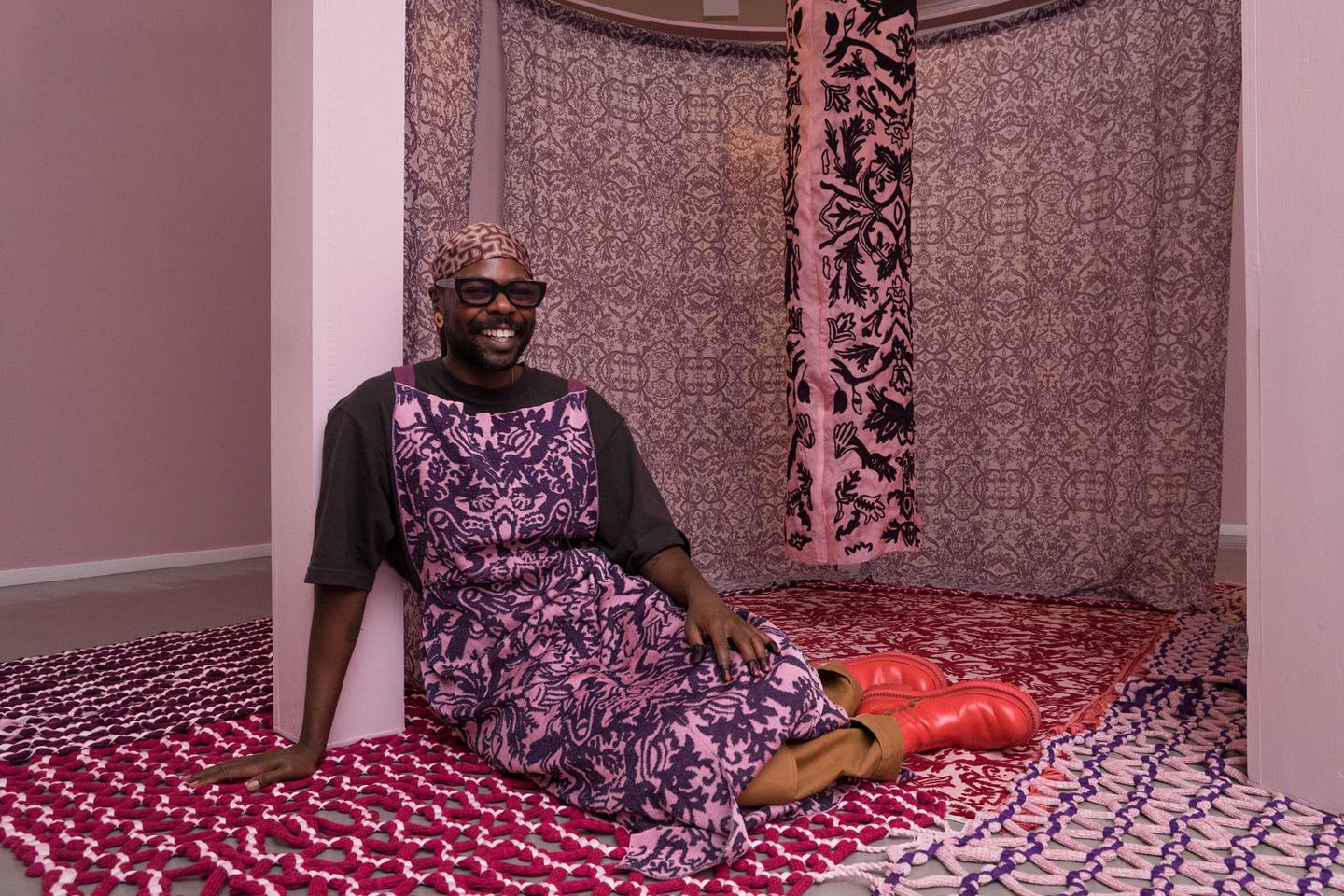
Damien Ajavon. Photo: Jacky Jaan Yuan Kuo
Damien Ajavon
“When you come to a sanctuary,” says Damien Ajavon, “you have this feeling of a protected space, where you can get your spirituality without any form of judgement. And it’s you and your faith, whatever you believe in”.
Ajavon’s work Sanctuary is an invitation for us to step inside a protective space. “My true belief is in protection,” Ajavon says, “and protection comes with care and with love”.
This is also a domestic space for the artist. “What is the first thing you see when you enter someone’s home,” Ajavon asks, “you see their coats, you see their shoes, but you also see their family portraits.” On the gallery wall is a photograph of Ajavon, wearing an apron made of the same fabric with the same pattern as the sanctuary, a way of Ajavon showing familiarity with the space, that the artist made it theirs. For Ajavon “my being is my material”.
Sanctuary is a space within a space – a practice of space-making and space-claiming that is deeply inspired by the migrant community, the diaspora – Nomadic codes that are used to navigate and settle in spaces and make those spaces theirs– building spaces of safety within society– communities of care. This care is carried into the colour choice which Ajavon loves and uses to project comfort.
What Ajavon uses to create their sanctuary – their literal material, is the product of many hours. Thread by thread, Ajavon slowly, by their own hands and the occasional helping hands of their community of visitors and friends, creates patterns and weaves. In this instance, Ajavon noticed a wallpaper pattern from the downstairs reception hall at Oslo Kunstforening. Ajavon saw the repeated organic leaf motif and thought of it as hands – suggesting movement, dance, gesture, care and touch. It is this altered pattern with hands that Ajavon has created upstairs, as both a pattern in fabric and in embroidery. Ajavon has also included a digital print, inspired by the room, with friend Quentin Bidaud, and has incorporated further biographical detail including wood from the farm on which they live. The artist invites us to have an intimate encounter with their handmade textiles, removing our shoes and softly treading into their protective embrace.
Ajavon invites us to see this skilled handcraft in a renewed way, but not a precious way. It is grounded, it is comfortable, it is familiar, it is everyday, it is domestic, and it is a manifestation of care, attention and time. Time becomes tangible in Ajavon’s work, not only the time given to this intensive process but also time measured, thread by thread. “I’m very slow,” Ajavon says, “I feel I was a turtle, or a lizard." The ways in which the practice materialises and uses time also illustrates how the practice connects craftspeople over generations, both previous generations and those in the future. Weaving is an ancient technique, passed along through people, technologies and fabrics that will continue to be transmitted into the future. “Textiles,” as Ajavon says, “can contain the future along with the past and the present”.
Setting a loom and twisting, tangling and crossing threads. Encoding the material with technique, with experience, with time is a way for Ajavon to “translate whatever I learn, whatever I see, whatever I feel. It’s a moment for you and your mind to share with a material that doesn’t talk. It is a way of caring,” Ajavon says, “caring for a practice”.
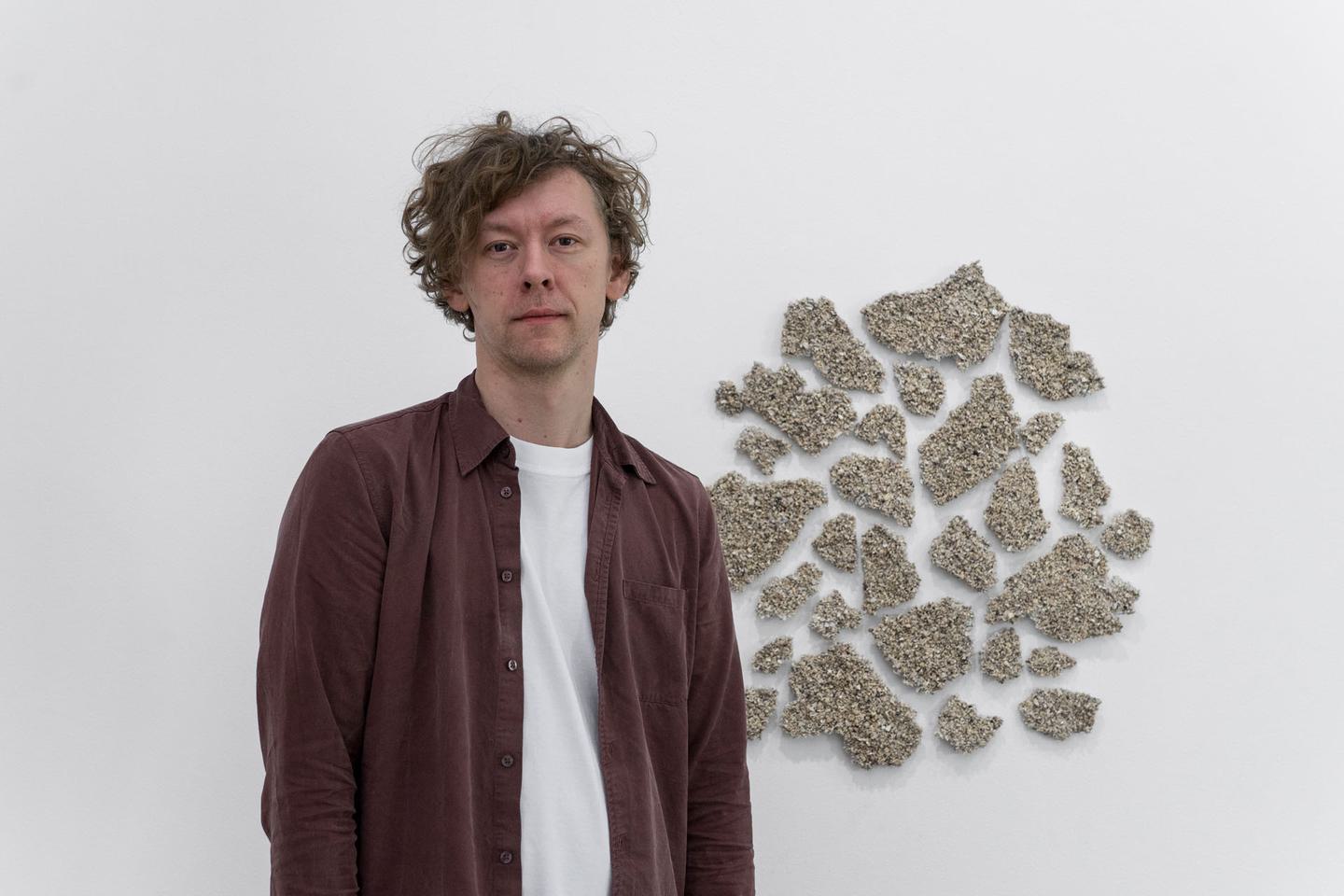
Kåre Aleksander Grundvåg. Photo: Jacky Jaan Yuan Kuo
Kåre Aleksander Grundvåg
Since 2021 Kåre Aleksander Grundvåg (b. 1984) has been collaborating with seagulls. Also with scientists, landscape architects, architects, artists, Tromsø Municipality and Tromsø Kunstforening on an ongoing project that provides infrastructure for the critically endangered Kittiwake, a type of seagull, who Grundvåg describes as environmental refugees. The Kittiwakes have been nesting on the façades of buildings around Tromsø where they are in an antagonistic relationship with the human residents due to their noise, their odour and their excrement. “They take up a lot of space,” says Grundvåg whose project, realised through years of meetings, planning, negotiation and collaboration, provides temporary mobile structures in which the Kittiwakes can nest. The project has grown to include a welcoming festival of lectures and public events as the migratory birds return each year. The project’s aim is explicitly to change perception of the bird, to increase knowledge of the bird and its contingent existence. And for Tromsø Municipality to put into place area planning and be hospitable towards this critically endangered visitor.
The sound work in Grundvåg’s installation, It Looks Like You Belong Here, is a recording made of Kittiwakes roosting in their purpose-made mobile hotels at Tromsø Kunstforening.
This kind of broad-based, multiplex project encompassing research, civic bureaucracy, biology and residents (both human and other) typifies Grundvåg’s practice. Grundvåg is a natural collaborator. He sits on numerous boards of numerous arctic art institutions and associations and is passionate about his union work, which he sees as the maintenance of a complex, diverse ecosystem.
The sculptural pieces in It Looks Like You Belong Here are a collaboration between the artist and soil, clay, time, geology, bacteria, vegetation, moss, and algae. Grundvåg gathers and transports soil and clay which is mixed with sand and extruded, using 3D printing construction technology (an Open Source utopian technology that is itself informed by biology in a process known as biomimicry).
These earth forms contain various organisms local to the origin of the soil and clay, that will encounter each other in this new habitat and their interaction will affect the sculptures themselves. They are not inanimate or inert forms. They are complex habitats with multiple living organisms interacting and affecting each other and the environment. Grundvåg describes these as “bioactive materials”. In Kåre Aleksander Grundvåg’s work the neutrality of such a common artistic material as clay is called into question. Both the material’s origin and its residents are brought into the work as collaborating agents.
At the commencement of construction projects ‘breaking ground’ and ‘turning the first sod’ are symbolic actions often performed by politicians. But the violent disruption of complex soil ecology is rarely considered in these construction ceremonies. We cut into and alter not only a complex ecosystem, but the geological record. Whilst our manipulations, extractions and displacements of complex ecosystems is no doubt damaging and disruptive, it can also create adaptations and unexpected results in the interaction of matter.
Through his practice, Grundvåg has come to recognise the “productive potential of collaboration” which never takes an expected form, it is also, perhaps, the productive potential of chaos.
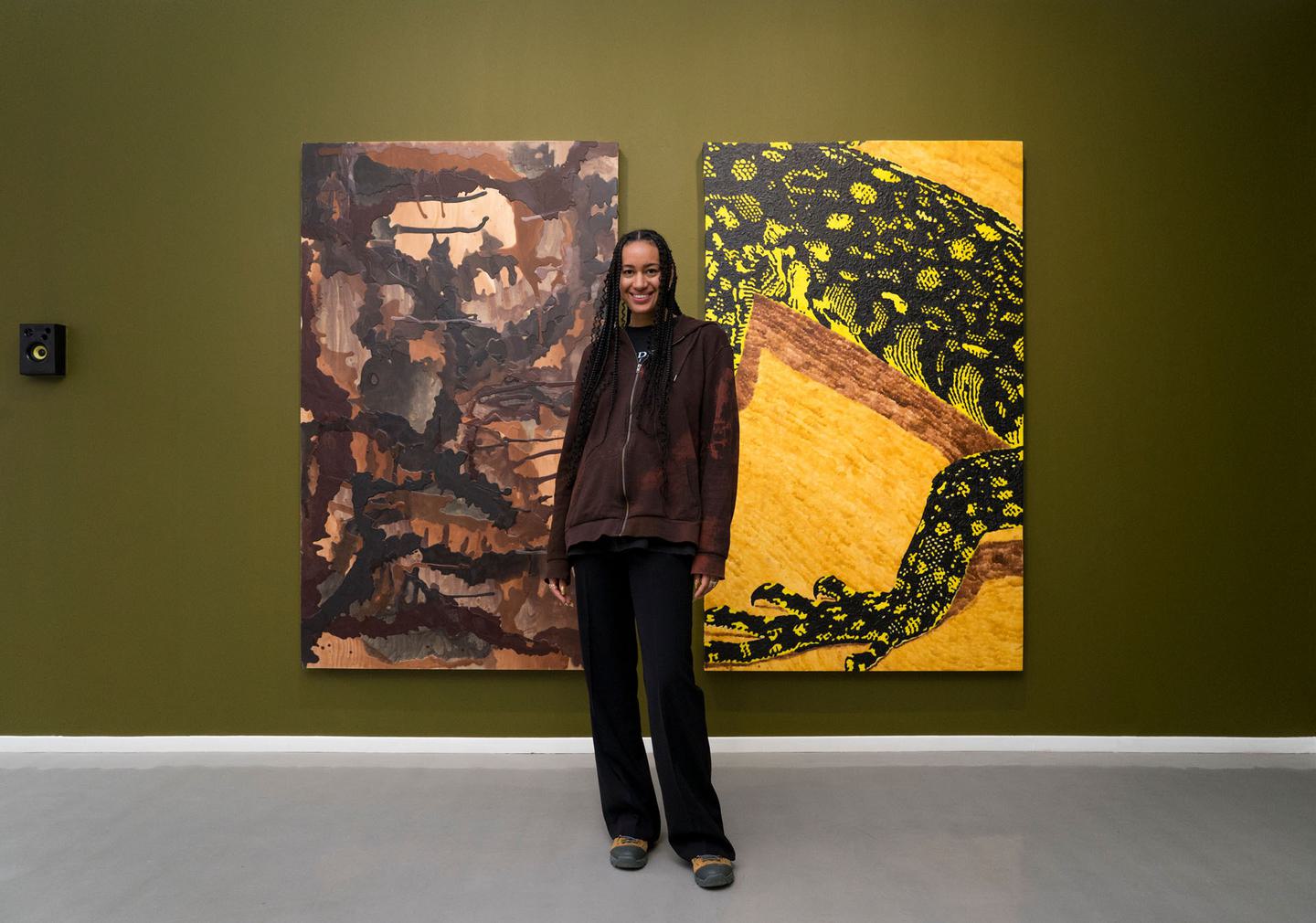
Linda Lamignan. Photo: Jacky Jaan Yuan Kuo
Linda Lamignan
Linda Lamignan (b. 1988) was told a remarkable story by their Aunt. In this piece of oral storytelling, Lamignan’s Aunt related that upon the death of her mother, she was separated from her sister and sent to live with her deceased mother’s family. This unfamiliar village was host to very large monitor lizards – Ornate Monitor Lizards. These Ornate Monitors were referred to as ‘father’ or ‘mother’, ‘uncle’ or ‘aunt’ and were given burial rights, wrapped in white cloth upon their death. The Ornate Monitor Lizards were, in this village, ancestral beings. After losing a parent, Lamignan’s Aunt gained another in a different species. We can hear pieces of this story in Lamignan’s work, Abede which the artist recorded in conversation with their Aunt.
The dense interconnection of collection, translation and transmission typifies Lamignan’s practice. Informed by the Animist belief system which influences the way the artist works with materials, stories, history and with collaborators, Animism, says Lamignan, is “the belief that everything is alive, that everything is connected and everything has a story or an energy”. It is “a way of experiencing the world”.
Lamignan’s ancestors originated from places surrounded by and with deep symbolic and physical relationships to water – both the rivers of Delta State in Nigeria and the islands of Boknafjord in Norway. These are also places where crude oil is a strong presence – geologically, economically, politically and socially. Lamignan has sought ways of relating to petroleum outside the capitalist value system. What happens to the landscape when that literal energy is extracted? How can it become something else? In Abede we encounter four wooden panels on the walls that carry forms made of petroleum wax combined with pigment. On these panels, translated into petroleum wax and pigment is the Ornate Monitor Lizard.
This species of lizard is a witness to the formation of the crude oil, having existed for about as long as it takes crude oil to develop. In this representation, the lizard is also made of petroleum wax.
The combination of material translation and storytelling is also evident in the video work, which was created by Lamignan in collaboration with artist Kristoffer Amundsen. Amundsen created a digital 3D model of the Ornate Monitor Lizard. The ancestral being is thus translated from an oral history, into a digital audio story and into a digital 3D model in a video. The video was composited and edited by Lamignan. The video uses Open Source software technology, technology that is not dissimilar to communal storytelling traditions in which pieces of story are adapted, refined, swapped, moved, honed. They are collectively authored and owned and are adapted into new contexts. Open Source technology thus takes on an important symbolic weight in Lamignan’s work. As does collaboration.
Lamingnan and Amundsen collaborated on the video work, which fuses footage and audio sent to Lamignan by family members, new footage and digital compositions. The immersive four-channel audio work has been created in collaboration with Nova Varnrable, an Ethiopian Norwegian sound artist and musician. It too collages pieces of field recording, interviews, stories collected and composites them with electronic compositions and archival recordings.
Lamignan’s collaborators are close friends and family, a kinship network. In addition to Kristoffer Amundsen, Lamignan’s work contains contributions from family members Esther Oruwa Ogoba, Geoffrey Ogoba and Seidougha Ogoba.
In the formation of Lamignan’s work, stories, beings and elements are all translated through multiple forms, passed through various people and channels, digital, oral, analogue, familial and communal. “The stories I tell through my work are created from my loving relation to the people I’m surrounded by, the living landscapes I and my ancestors belong to,” says Lamignan, “there isn’t a division between me and my art and my friends. It’s all connected. Things happen in connection with each other.”
Damien Ajavon
Damien Ajavon was born in 1990 in Paris and is of Senegalese and Togolese origin. Ajavon graduated from the textile department at the Oslo National Academy of the Arts in 2023, and as a queer Afropean they are concerned with the relationship between different craft traditions. Ajavon uses the intersection of their African and Western backgrounds as a tool for storytelling and exploration.
Kåre Aleksander Grundvåg
Kåre Aleksander Grundvåg was born in 1984 in Tromsø, where he lives and works. Grundvåg is educated from the Academy of Arts in Tromsø and is currently a PhD candidate in artistic research at UMAK, Tromsø and KMD, Bergen. Through various sculptural techniques and process-based projects, Grundvåg explores a non-human architecture. Material experimentation, bio-mimetics and traditional knowledge are included as elements in his practice, with the coastal landscape of Northern Norway as a frame of reference.
Linda Lamignan
Linda Lamignan was born in 1988 in Stavanger and lives and works in Copenhagen. Lamignan is educated at the Academy of Fine Arts in Oslo and at the Royal Danish Academy of Fine Arts in Copenhagen. In performance, objects, video and music, Lamignan examines, among other, how the experience of floating between different worlds is connected with diaspora, landscapes and cultural conditions related to West Africa and Scandinavia.
Anders Bjørnsen, head of Art and Culture at Sparebankstiftelsen, says about the collaboration with Oslo Kunstforening on the prize exhibition “Sparebankstiftelsen DNB is proud to collaborate with Norway's first art institution, and Sparebankstiftelsen DNB's Grant Exhibition has gradually built up to become one of Norway's most important and prestigious scholarships. We see it as important to support this exhibition and the works of art that are presented".
This year’s jury was appointed in 2022 and consists of Elise Storsveen, visual artist (chair of the jury), Pedro Gómez-Egaña, visual artist and professor at the Academy of Fine Art Oslo, Sandra Mujinga, visual artist and musician, Axel Wieder, director Bergen Kunsthall and Elisabeth Byre, director Oslo Kunstforening.
The jury members nominate three artists each who are invited to submit a portfolio. The only fixed criterion is that the artists must have an affiliation with Norway, either in the form of residence or that the person in question is a Norwegian citizen. Out of a total of fifteen artists, three are selected to participate in the grant exhibition.
The annual grant exhibition has been organized by Oslo Kunstforening since 2008 with support from Sparebankstiftelsen DNB. Previous grant recipients are Kim Hankyul (2022), Anne Haugsgjerd (2021), Berivan Erdogan, Hanni Kamaly and Kjetil Skøien (2020), Germain Ngoma (2019), Eirik Sæther (2018), Emilija Škarnulytė (2017), Tor Børresen, (2016), Andrea Bakketun and Christian Tony Norum (2015), Ingrid Lønningdal (2014), Sandra Mujinga (2013), Marie Buskov (2012), Kaia Hugin (2011), Ann Cathrin November Høibo (2010), Ignas Krunglevičius (2009) and Ellisif Hals and Susanne Skeide (2008).
